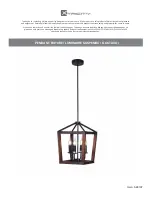
Troubleshooting and Maintenance
5
UR11 | 5-1
5 TROUBLESHOOTING AND MAINTENANCE
This chapter:
Lists all faults and alarms that may occur.
Indicates the possible causes of each fault and alarm.
Lists most frequent problems and corrective actions.
Presents instructions for periodic inspections and preventive maintenance in the equipment.
5.1 OPERATION OF THE FAULTS AND ALARMS
When the high temperature alarm is detected:
The status LED "TEMP_ALARM" (yellow) lights.
There is no blocking of the thyristors gate pulse, the rectifier remains in operation.
When a fault is detected:
Thyristors gate pulse blocking.
The LED(s) "UDC1(2)_OK" turns off, showing which rectifier unit is under fault condition.
The RL1 output relay opens.
In case of overtemperature (heatsink temperature higher than 90 °C (194 °F)), the "TEMP_FAULT" LED (red)
lights. In this case:
- RL3 relay output opens simultaneously to RL1.
- "TEMP_ALARM" LED must be light previously indicating alarm, as well as RL2 should be open.
In case of undertemperature (heatsink temperature smaller than -9 °C (16 °F)) or the NTC cables rupture,
the "TEMP_FAULT" LED (red) lights. In this case:
- RL3 relay output opens simultaneously to RL1.
The rectifier is back to the normal operation right after the fault is solved, in case it is properly connected to
the power supply.
5.2 FAULTS, ALARMS, AND POSSIBLE CAUSES
The
summarizes the faults and alarms operation.
The monitoring signals that can indicate fault/alarm and the status outputs are presented at
.












































